Learning how to grow your own medicine is one of the most important things you can do to help ensure the survival of your family during a long-term disaster. Once you establish a backyard apothecary and master mixing and preserving your own natural remedies, you might just want to start using them nearly exclusively right now, before the SHTF.
In addition to growing your own medicine, you should also learn how to both identify and cultivate healing weeds, wildflowers, and plants to add to the survival apothecary.
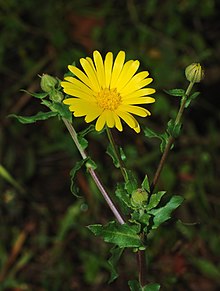 |
Calendula |
The petals from the calendula plant boast medicinal properties that are equally beneficial to both humans and livestock. The plant has been used to treat skin rashes, diarrhoea, conjunctivitis, eczema, to treat fever, varicose veins, and both bed sores and minor wounds or centuries. Calendula possesses strong immune system boosting properties, antibacterial prowess.
Because calendula stimulates the production of collagen, it has also been used as an active ingredients in creams and salves to help reduce the appearance of both scarring and wrinkles. The consumption of calendula is highly discouraged by pregnant women because it could induce a miscarriage. |
 |
Daisies |
Although daisies have a slightly bitter taste, the entire plant (except for mature roots) is typically believed to be safe to eat. Daisies have been used for hundreds of years to treat both common headaches and migraines, excessive menstrual bleeding, to make a post-labour salve, stomach ulcers, to treat swollen breasts after nursing when made into a salve, to treat kidney problems, and as a whole body cleansing tonic.
To make a cool tea with daisies (and other edible wildflowers) combine 1 pint of daisy petals, with a tablespoon of honey – or to taste, up to two lemons, and enough water to create a typical lemonade mixture. |
 |
Dandelions |
You likely will not have to actually plant this “weed” in your survival apothecary and can instead just pluck them right out of the yard. This often misunderstood and cast aside wild flower can be successfully used to treat ovarian issues, menstrual cramps. Menopause, and makes a great tasting hot or cold tea – and wine. A dandelion’s roots, flowers, and leaves, and all edible and can make the basis of a foraged survival salad.
The wildflower boasts a high vitamin A and C content, as well. Dandelion-based natural remedies have been used to treat gallbladder issues, as an appetite stimulant, and to treat liver problems. If you sustain a bug bite, sting, or bruise, just pick a dandelion head and rub it onto the spot to reduce swelling and foster healing. |
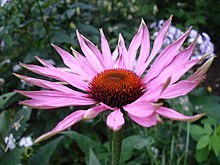 |
Echinacea |
The leaves and flowers from this plant both hold healing properties. The dried leaves can be chopped and mixed with just enough vodka to create a syrup consistency and then used to treat common cold and flu symptoms. Echinacea also is quality immune system booster, infection fighter, and excellent for combating a variety of urinary tract and respiratory infections. Echinacea is typically consumed as a tea to garner its healing properties.
|
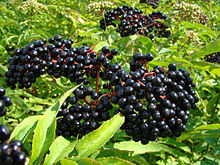 |
Elderberries |
This natural immune system booster can be taken in small (1 teaspoon for adults) amounts daily and turned into a syrup and taken to treat sore throats and reduce fever. To make elderberry syrup, Combine 3 cups of boiling water and a half cup of dried elderberries. Bring the mixture to a rolling boil and then turn the stove down to a simmer. Simmer for 30 minutes. Remove the mixture from the stove and strain in a glass jar with a firm fitting lid.
While the mixture is still hot, stir in 1 teaspoon each of ginger, cinnamon, and cloves. Next, meld in one cup of honey. Allow the mixture to cool enough that it does not burn the mouth before consuming up to four teaspoons daily while treating an illness. |
 |
Garlic |
This survival apothecary must have boasts a substantial amount of antimicrobial, antibacterial, and anti fungal properties. Garlic can also be used to draw out infection from wounds, bites, and stings – as well as contaminants from within the bloodstream. To use garlic as a natural remedy, you can simply consume it raw, as a spice, cook with it, rub it onto the infected area and cover it with a clean cloth.
To do an intense germ or toxin cleanse, combine one chopped up clove of garlic with a shot glass full of carrier oil – coconut, olive, and almond are recommended. Allow the garlic to infuse in the oil for a minimum of five hours, and then rub it onto the soles of your feet, cover it with clean socks, and then go to sleep. |
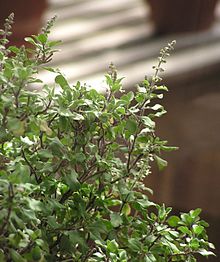 |
Holy Basil |
This Indian herb is also commonly referred to as Tulsi or the “Queen of Herbs.” Holy basil is comprised of substantially large amounts of vitamins A and C, chlorophyll, calcium, and zinc. It is often used to treat diabetes, ulcers, joint pain, bronchitis, malaria, and in alternative treatments for cancer. |
 |
Onions |
Yep, even the common onion should have a place of honour in a survival pharmacy. Just like garlic, onions can also help remove toxins and bacteria from the body. You can simply slice an onion and place a slice or two on the soles of your feet, cover them up with socks, and let the vegetable pull germs from your body while you sleep. Cooking with any variety of onion frequently, is also a great preventative against toxin build up and to help boost the immune system. Onion cough syrup might not sound the least bit yummy, but it is a natural tool to combat both the common cold and the flu. To make onion cough syrup, place two or three slices of onion in a skillet over low heat, pour in two cups of honey, and allow it to lightly simmer for half an hour. Remove the mixture from the oven and stir in a chopped garlic clove, and a pinch each of cinnamon and ginger root to improve the taste and to boost the immune system strengthening nature of the syrup. The onion cough syrup can keep for up to 14 days if kept sealed in a refrigerator. Adults can take 1 teaspoon of onion cough syrup up to four times a day to treat cold and flu symptoms. |
 |
Oregano |
You can use fresh or dried oregano as part of your natural healing and preventative medicine routine. The popular and common herb boasts antioxidant, antibacterial, antimicrobial, and expectorant properties. Oregano also possesses high quantities of vitamins A, C, and E, as well as niacin, iron, copper, potassium, and zinc. To treat a sinus infection or symptoms often associated with the common cold, combine 2 drops of oregano essential oil or 1 teaspoon of either dried or fresh herb and 1 teaspoon of carrier oil.
Pour the mixture into a small pot and heat it lightly (can be used cold also, but heat activates the properties of all herbs) and rub it onto the palms of your hands or the soles of your feet to combat infection and cold symptoms. You can also double the amount of oregano in the recipe above and mix it into a glass or cold water and drink once daily for about five days, to help alleviate sinus problems, sore throat, headache, and stomach upset that typically accompanies a cold or the flu. |
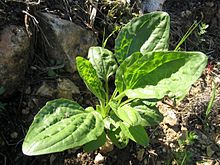 |
Plantain |
This common so-called weed grows just about everywhere throughout the United States and is packed full of valuable and powerful nutrients. Plantain contains silicon, iron, sulphur, calcium, and magnesium. The plant has successfully been used to heal skin rashes, soothe the pain caused by minor wounds, snake bites, to treat stomach ulcers, digestive disorders, and heartburn.
Plantain is a common ingredient in natural salves and lotions for general skin care – and as a foraged salad ingredient. |
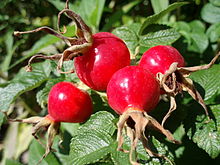 |
Rose Hips |
These little beauties actually possess more vitamin C than oranges. They can grow outdoors in even cold and harsh climates. Rose hips are valuable natural healers used to treat gallbladder issues, kidney infections, diarrhoea, gout, constipation, as well as back and leg pain. As an added bonus, rose hips can also taste delicious when used to brew homemade wine.
The fruit from the rose hip bush can be eaten raw, but only after the hips have been crushed thoroughly. It is best to wash the rose hips and soak them in water overnight before preparing to use in any natural remedy or wine making. Remove the hips from the soak and cook them over medium heat for about a half an hour before brewing into a medicinal tea or using in any other type of internal rose hips healing recipe for their anti-inflammatory and antioxidant properties. |
 |
Turmeric |
This incredibly healing herb will be hard to grow in many regions and may have to be grown inside during the winter or stockpiled in bulk. Turmeric possesses incredibly anti-inflammatory properties and is used extensively to treat swollen or sore joints, both muscle and tendon strains, as an ingredient in homemade gum healing toothpaste, cirrhosis, stomach aches, as a natural treatment for cancer and Alzheimer's Disease.
To make an anti-inflammatory poultice using turmeric, mix one part salt and two parts of the healing herb with just enough water to create a paste style consistency. Slather the paste onto the injury or sore body part and allow it to harden against the flesh for a least a half an hour before washing away. Repeat this process as needed until the pain and swelling subsides. |